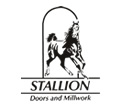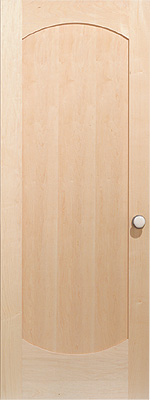 |
 |
 |
 |
 |
Maple
General Information:
Maple is similar in appearance to that of birch, the maple's creamy white colors may have a slightly more pinkish hue than that of the birch. This hardwood with it's closed grain accepts stains and finishes very well, and is often clear finished to let it's natural warm colors show through. Sometimes builders will finish it in a pickled finish which is a type of cloudy white patina applied to the natural wood.
Species:
Maple trees are a deciduous tree that shed all of their leaves during one season. It's scientific name is Acer saccharum, Acer nigrum. Maple trees primarily grow throughout the Mid-Atlantic, Eastern U.S. and Lake states region. These trees can reach heights of up to 120 feet. In volume it represents about 4% of commercially available U.S. hardwoods.
Uses:
Maple versatile hardwood used in many applications in flooring, ballroom and gym floors, furniture, cabinets, millwork, doors, paneling, and many other uses. Of course we can't forget one other important use which we are all familiar with, that great tasting maple syrup. A single maple tree can produce up to 12 gallons of sap.
Color Characteristics:
The sapwood of maple is a creamy white with a slight reddish brown hue while the heartwood varies from light to a dark reddish brown. The color can vary by growing region and also by the time of the year it is harvested and dried. The maple may also naturally contain small pith flecks, mineral or worm tracks adding to it's character and warm charm.
Physical Properties:
Maple is very hard and heavy but with sharp tooling it machines very well, has good nail holding and screw holding power and requires pre-drilling, glues fairly well and takes stain very well.
Finishing:
This closed grained wood often has straight grain and may also have curly grain or scattered 'birds-eye' figure. It accepts stain readily and finishes beautifully as well as being an excellent wood for painting. The closed grain provides a great surface for the paint and the hardness of the species makes it more durable than pine. Closed grain woods such as birch, maple, cherry and poplar are 'diffuse-porous' having small dense pores which result in less distinct grain in contrast to 'ring-porous' open grain woods with distinctive grain patterns as in red oak, elm or ash. In general, a nicely sanded surface using multiple grits with a final sanding using 150 grit sandpaper will help to achieve a uniform stain across the whole surface. Some closed grain woods such as birch, cherry and maple may develop finishing blotches which is caused by texture grain which no amount of sanding will remove, it's a natural characteristic of the wood itself. Some finish manufacturers recommend the application of a wash coat prior to staining to create a more even appearance. Your finish supplier would be happy to provide you with their recommended finish for your application.
| Door Designs | Panel Types | Wood species | Sizing Options | Photo Gallery | General Info | About Stallion | Contact | Home | ||
| Stallion Doors & Millwork ©2003 This website best viewed using Internet Explorer 6.0 |
||